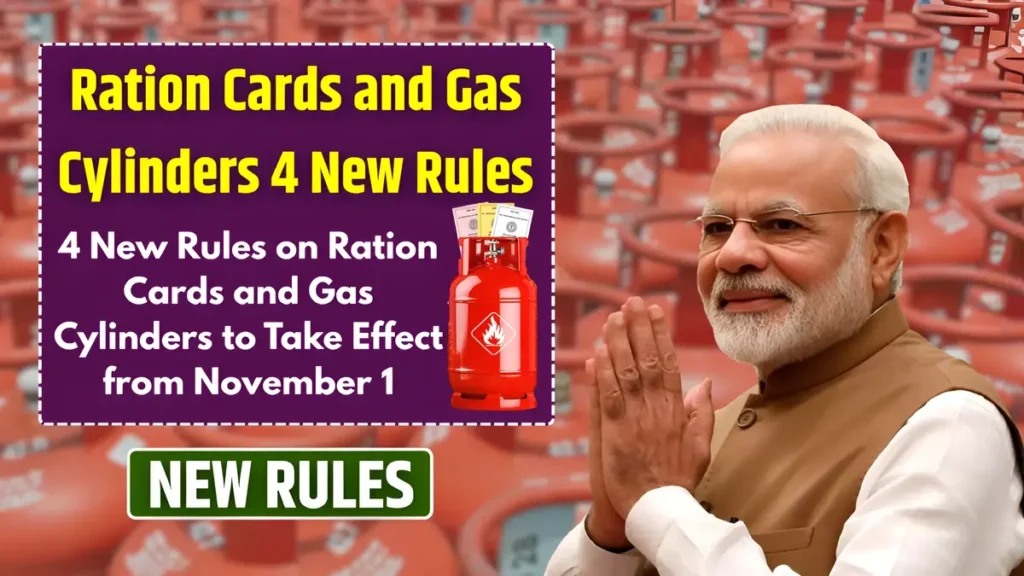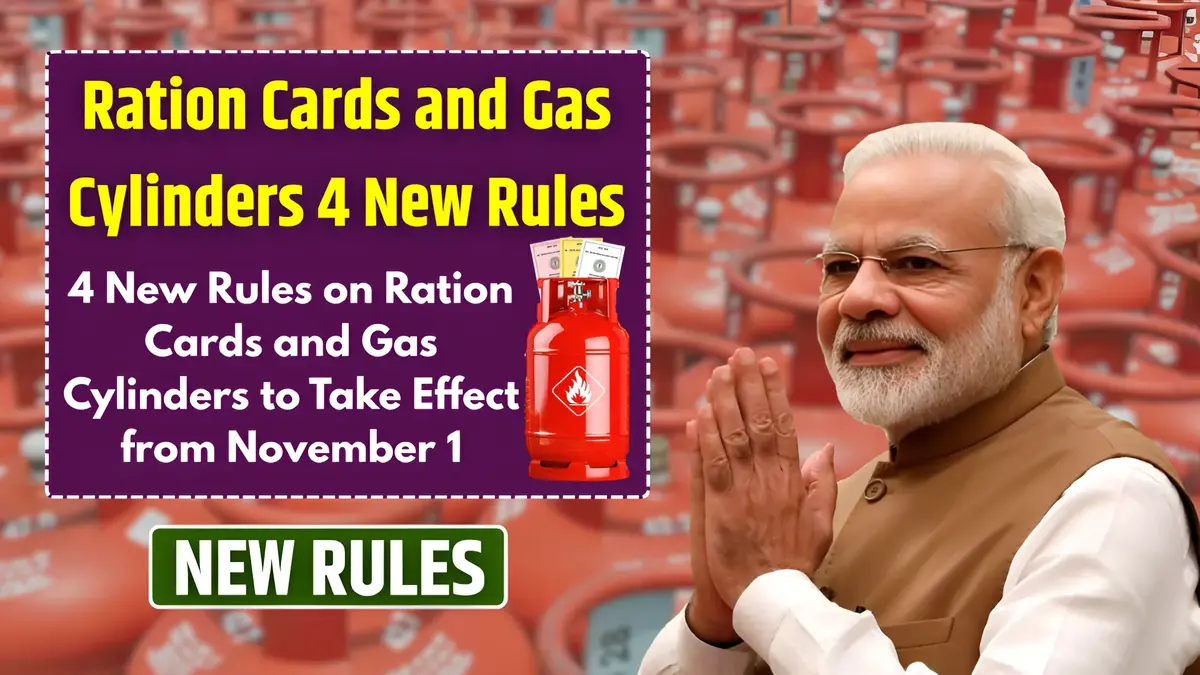From November 1, significant policy changes are being rolled out in India that will impact millions of households. These updates primarily revolve around ration card distribution and LPG (liquefied petroleum gas) cylinder rules. The government has taken these steps to improve transparency, efficiency, and service delivery in public distribution and fuel subsidy systems. These changes will affect how beneficiaries access subsidies, update personal information, and receive their entitlements.

Aadhaar Mandatory For Ration
One of the biggest shifts in the ration card system is the mandatory linkage of Aadhaar numbers with ration cards. The government has announced that from November 1, every beneficiary listed under the Public Distribution System must have their Aadhaar number linked to their ration card to continue receiving subsidized food grains. This change is aimed at reducing fraud, removing duplicate or ghost beneficiaries, and ensuring that only genuine individuals receive the benefits of the scheme.
Previously, while Aadhaar seeding was encouraged, it was not compulsory in all states. However, under the new rules, failing to complete this linkage may result in temporary suspension of benefits. Beneficiaries are being advised to visit their nearest ration shop, common service center, or food supply office with original Aadhaar cards for verification. Those who have not yet linked their Aadhaar numbers are urged to do so immediately to avoid disruption in services.
New Rules For Gas
Another major update is coming in the way LPG cylinders are booked and delivered. From November 1, gas distribution companies are implementing a more transparent and technology-driven booking and delivery mechanism. Now, booking a gas cylinder will be strictly Aadhaar-based, and subsidies will only be credited to bank accounts that are Aadhaar-linked.
Additionally, the delivery of gas cylinders will now involve OTP verification. When a consumer books a cylinder, they will receive a one-time password on their registered mobile number. This OTP must be shared with the delivery agent to complete the handover. This method aims to reduce theft, unauthorized delivery, and ensure that cylinders reach the intended recipient.
Some gas agencies have also announced changes in delivery timings and are introducing mobile apps to provide better tracking of booking and delivery. Consumers are encouraged to update their mobile numbers and Aadhaar details in their gas agency records as early as possible to ensure seamless transition to the new system.
Limit On Subsidy Reinstated
After several months of flexible subsidy policies due to rising international oil prices, the government is now reinstating the monthly subsidy limit on LPG cylinders. From November 1, households will receive a subsidy only on a limited number of cylinders per year. In most cases, this limit will be 12 cylinders per household annually.
This means that if a household consumes more than the subsidized limit, they will have to pay the market price for additional refills. This change is being made to better manage subsidy expenditure and encourage responsible usage of cooking fuel. The move is expected to impact large families or those who consume more LPG for commercial purposes under residential connections.
The government is also planning a review of income eligibility for subsidies. Those with annual incomes above a certain threshold may soon be excluded from the LPG subsidy scheme. Though this particular measure is still under discussion, it signals the government’s intent to target subsidies more efficiently.
bbEasy Correction In Ration
Alongside stricter rules, the government is also making it easier for people to correct or update their ration card details. Until now, updating names, addresses, or family details in a ration card involved a lengthy and bureaucratic process. Starting November 1, the process has been simplified across most states with the rollout of online self-service portals.
Beneficiaries can now log in to their state’s food and civil supplies department website and request corrections in their ration card records without needing to visit an office in person. These portals allow users to upload scanned documents, verify Aadhaar data, and submit applications digitally. In many states, corrections can now be completed within 7 to 10 working days.
The goal is to eliminate errors that can cause delays in ration distribution or wrongful denial of benefits. This change will especially benefit migrant workers, senior citizens, and individuals living in rural areas who often face difficulty traveling long distances for government services.
Why These Changes Matter
These four major changes reflect a broader effort by the government to tighten control over subsidy leakages while making services more efficient for the public. Aadhaar has become the central point of identity verification, and its integration across both ration and gas services aims to create a unified and reliable database of beneficiaries.
For the average citizen, these changes come with both responsibilities and benefits. On one hand, failing to update Aadhaar or mobile details might lead to disruption in receiving essential services. On the other, these updates promise better service delivery, fewer chances of fraud, and improved access to correction mechanisms.
In rural and semi-urban areas, awareness campaigns are already underway to inform the public about the new rules. Local ration dealers and gas agencies have been instructed to assist consumers with the transition process. It is important for families to stay informed and complete necessary updates well in time.
Final Thoughts On Updates
The updates from November 1 mark a significant change in how essential services like ration distribution and LPG supply will function in India. These changes are aimed at making the system more accountable and user-friendly, but they also place more responsibility on the beneficiary to maintain updated records and comply with verification procedures.
While the initial phase may cause some confusion or delays, in the long term these changes are expected to streamline the delivery of welfare services. Beneficiaries should take proactive steps linking Aadhaar, updating mobile numbers, and using the new digital services to ensure uninterrupted access to their entitled benefits.
Disclaimer: This article is for general informational purposes only. Readers should verify details with official government sources before making any decisions based on the information provided.
